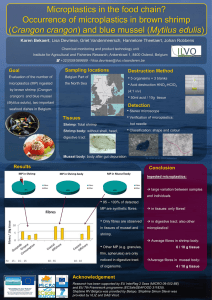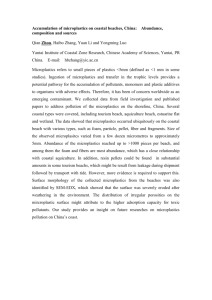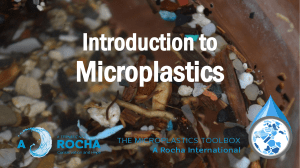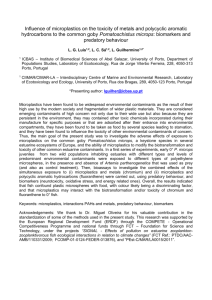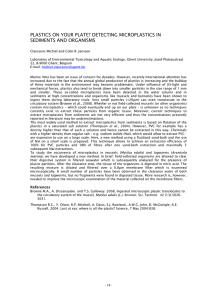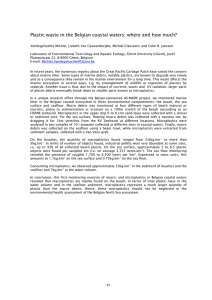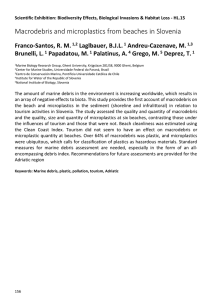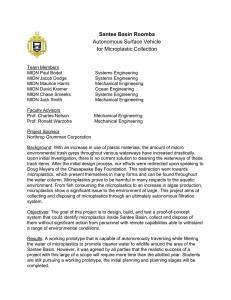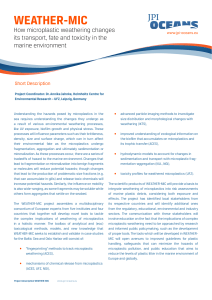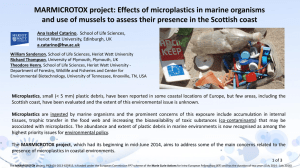Goal Microplastics Method Benthic litter LOD values for fibres
advertisement
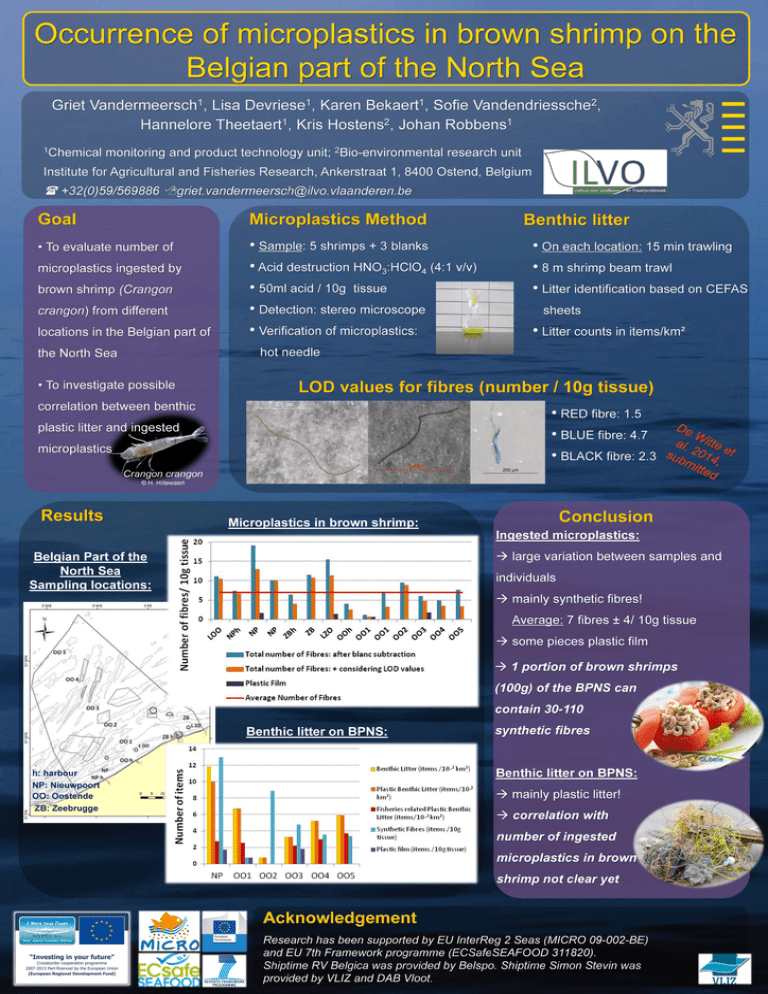
Occurrence of microplastics in brown shrimp on the Belgian part of the North Sea Griet Vandermeersch1, Lisa Devriese1, Karen Bekaert1, Sofie Vandendriessche2, Hannelore Theetaert1, Kris Hostens2, Johan Robbens i 1Chemical monitoring and product technology unit; 2Bio-environmental research unit Institute for Agricultural and Fisheries Research, Ankerstraat 1, 8400 Ostend, Belgium +32(0)59/569886 ^ägriet. vandermee Vltvo Instituut voor L a n d b o u w b o n Visserijonderzoek Goal Microplastics Method • To evaluate number of • Sample: 5 shrimps + 3 blanks • On each location: 15 min trawling microplastics ingested by •Acid destruction HN03:HCI04 (4:1 v/v) • 8 m shrimp beam trawl brown shrimp (Crangon 50ml acid / 1 0g tissue crangon) from different Detection: stereo microscope locations in the Belgian part of Verification of microplastics: the North Sea hot needle • To investigate possible Benthic litter • Litter identification based on CEFAS sheets • Litter counts in items/km2 LOD values for fibres (number 10g tissue) correlation between benthic • RED fibre: 1.5 plastic litter and ingested • BLUE fibre: 4.7 microplastics • BLACK fibre: 2.3 • • Crangon crangon 200 pm © H. Hillewaert Results Conclusion Ingested microplastics: Belgian Part of the North Sea -> large variation between samples and individuals -> mainly synthetic fibres! Average: 7 fibres ± 4/ 10g tissue -> some pieces plastic film -> 1 portion of brown shrimps (100g) of the BPNS can contain 30-110 synthetic fibres W m 'i&i Benthic litter on BPNS -> mainly plastic litter! -> correlation with number of ingested a Æ microplastics shrimp not clear yet Research has been supported by EU InterReg 2 Seas (MICRO 09-002-BE) and EU 7th Framework programme (EC Shiptime RV Belgica was provided by provided by VLIZ and DAB Vloot.
